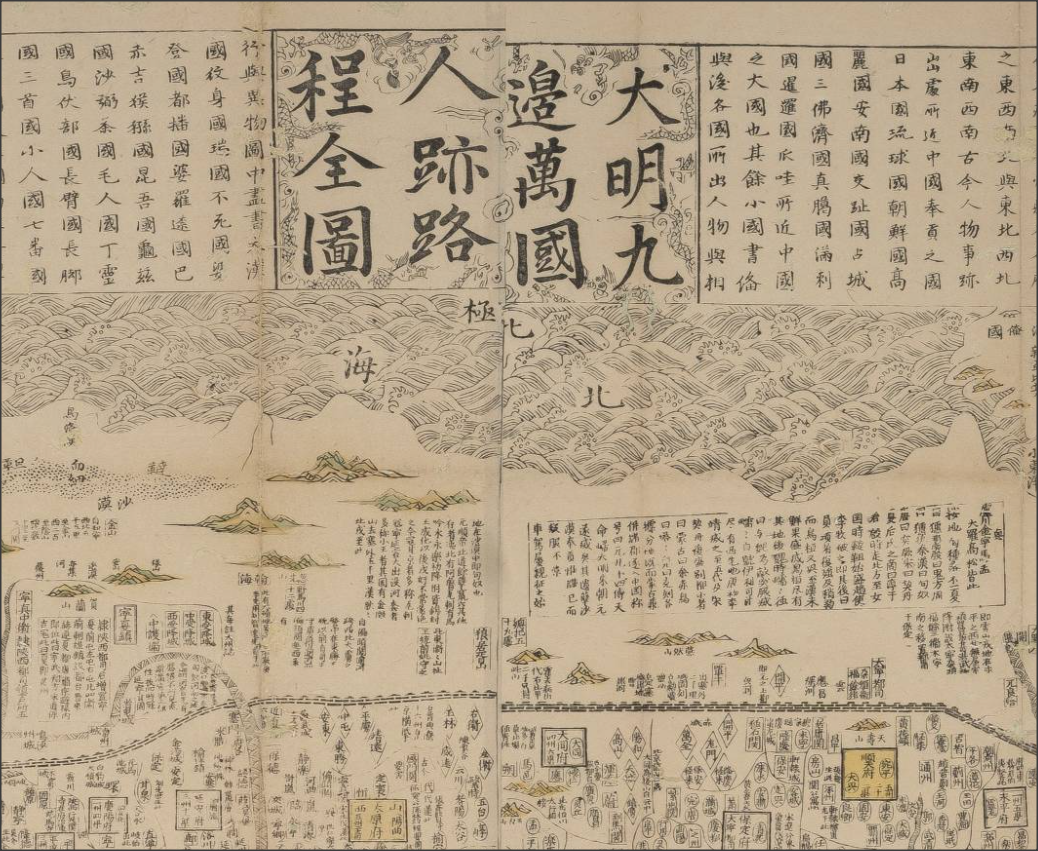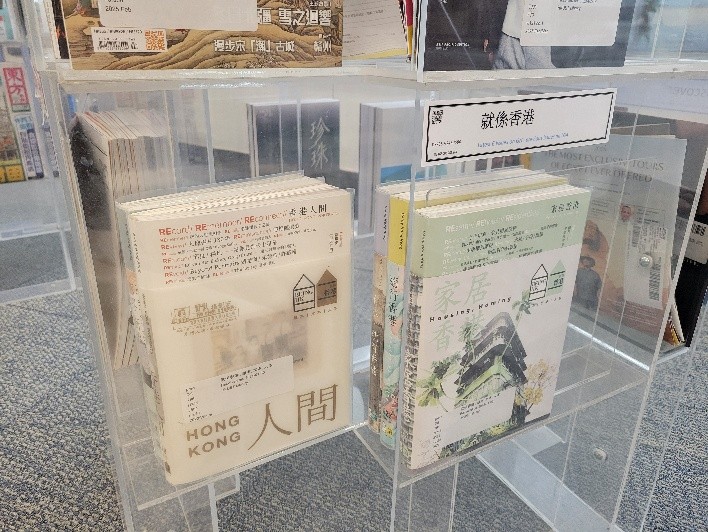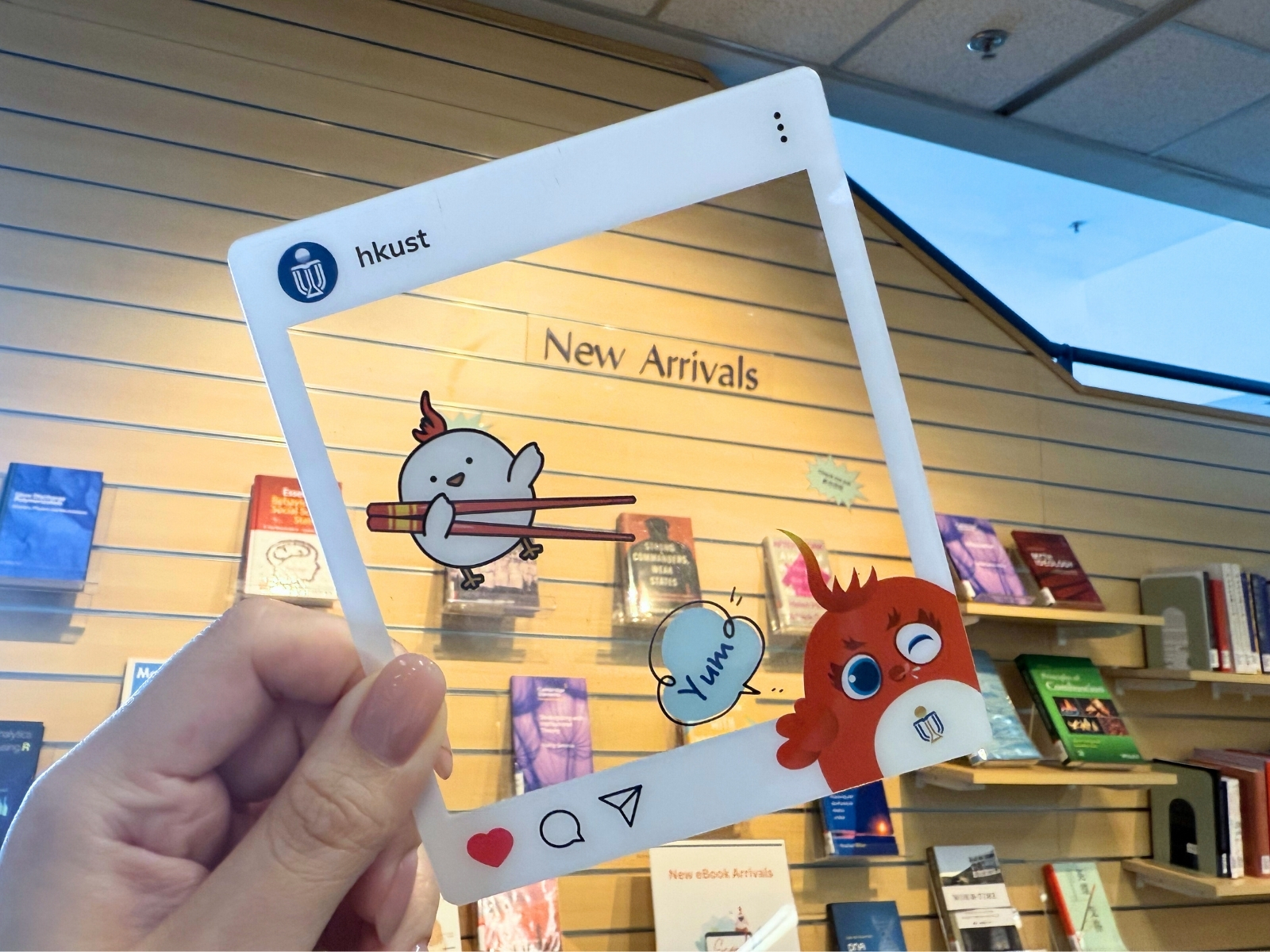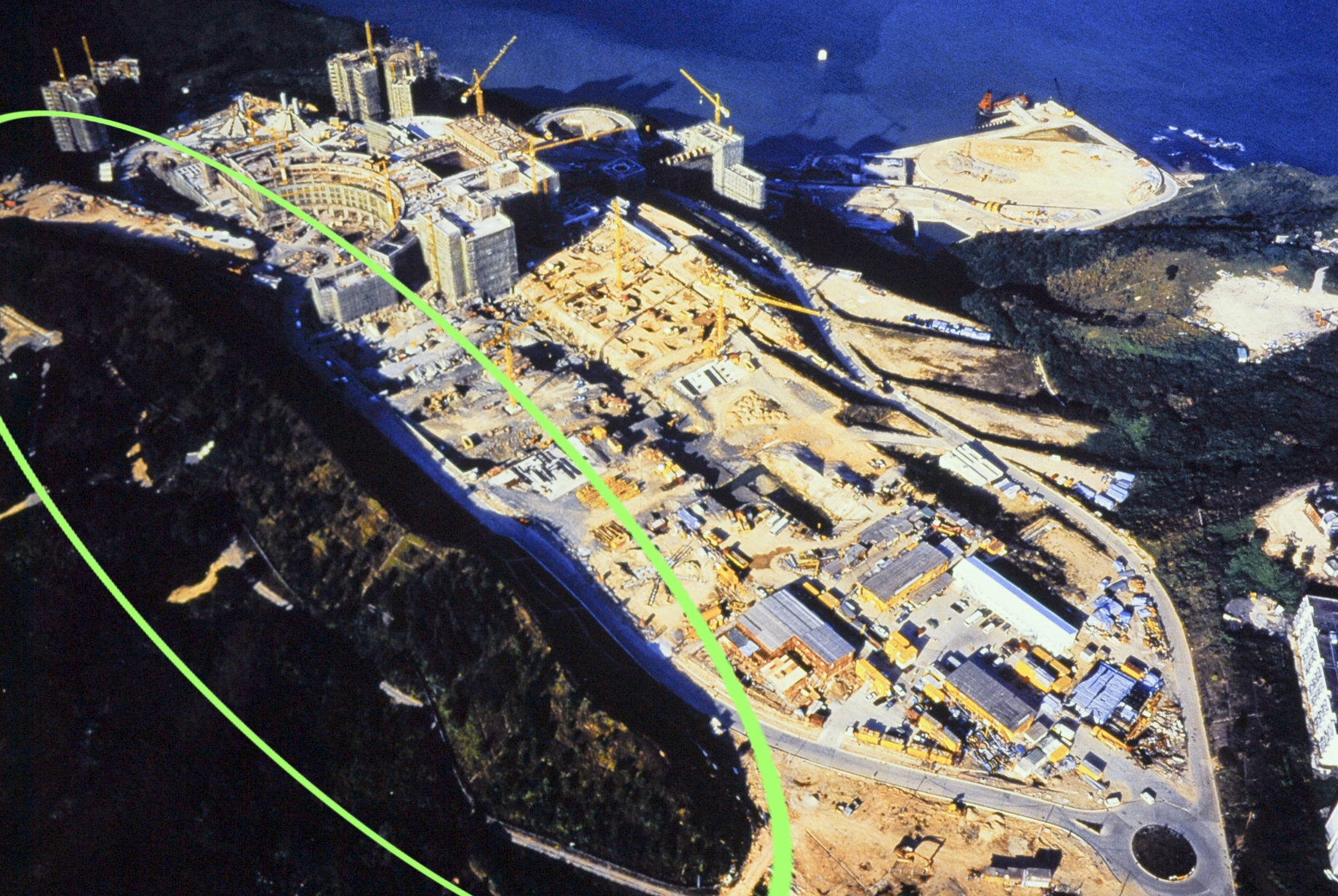Old maps are visually beautiful; and they carry a lot of interesting stories.

The Library hosted a 3-day research symposium last December with map historians from local and overseas institutions. One really memorable talk in the symposium was about this famous Chinese map dated 1644, the year the Ming Empire collapsed: <天下九邊分野人跡路程全圖> (A comprehensive map of the kingdom of China and neighbouring countries).
The speaker, Professor Mario Cams of KU Leuven (Belgium), explained that this fascinating map was a hybrid of Chinese and European mapmaking; he told the interesting threads of history in a century of east-west exchanges that led to this map. We do not have a copy of this rare map, but you can find a similar one printed in the 18th Century in our Special Collections.
You can examine the image of the 1644 map at this site: look for the latitude scale, north and south poles, Europe, North and South Americas (separated); these are the typographical knowledge from the West, and are scattered around the edges of the map. However, the bulk of the map in the middle is the Ming Empire administration, which is not intended to represent geographical reality.
To weave the story of the map, Professor Cams started in 1555, the era when 2 Chinese maps from Fujian travelled to Europe via merchants in Southeast Asia. Afterwards, Jesuit missionaries brought European geographic knowledge to the East, forming the basis of this “hybrid map”.
An important thread in the story is the Ming book publishing culture. Geographical knowledge from Europe as well as Ming administration and regional information was disseminated via the flourishing book industry, catalyzing the creation of interesting cultural artefacts such as this 1644 map.
The map was innovative in many ways. It has important influence in subsequent East-West cultural exchange and Chinese mapmaking in the Qing era. I encourage you to find an hour of your time to hear the remarkable story first-hand from Professor Cams (HKUST login required). It’s a very understandable talk, you can appreciate it without deep knowledge in history or Chinese language. He mentioned many maps in the presentation; since it is difficult for you to see details on the screen in the recording, I’m attaching a few links below to help you along! Enjoy your learning!
Gabi Wong
Library Director
lbgabi@ust.hk
Information for some maps and books mentioned in the talk:
- 古今形勝之圖
- Ortelius World Map Typvs Orbis Terrarvm, 1570 in the first atlas
Theatrum Orbis Terrarum - 1602 World Map of Matteo Ricci
- 大明一統志 (The Ming official gazetteer) and one map in the book
- 廣輿圖 (the first comprehensive atlas of China)
- Aleni’s Complete map of all nations
- 山海輿地全圖
- 三才圖會
- 大明官制
- Aleni’s atlas 職方外紀
Views: 928








